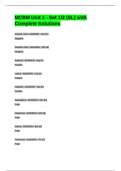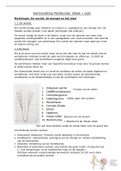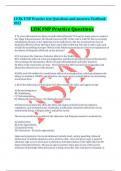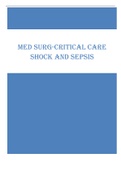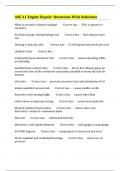Tentamen (uitwerkingen)
MCBM Unit 1 - Set 1/2 (SL) with Complete Solutions
- Vak
- Instelling
MCBM Unit 1 - Set 1/2 (SL) with Complete SolutionsMCBM Unit 1 - Set 1/2 (SL) with Complete SolutionsMCBM Unit 1 - Set 1/2 (SL) with Complete SolutionsMCBM Unit 1 - Set 1/2 (SL) with Complete SolutionsMCBM Unit 1 - Set 1/2 (SL) with Complete Solutions Aspartic acid - ANSWER - Asp (D) Negative ...
[Meer zien]
